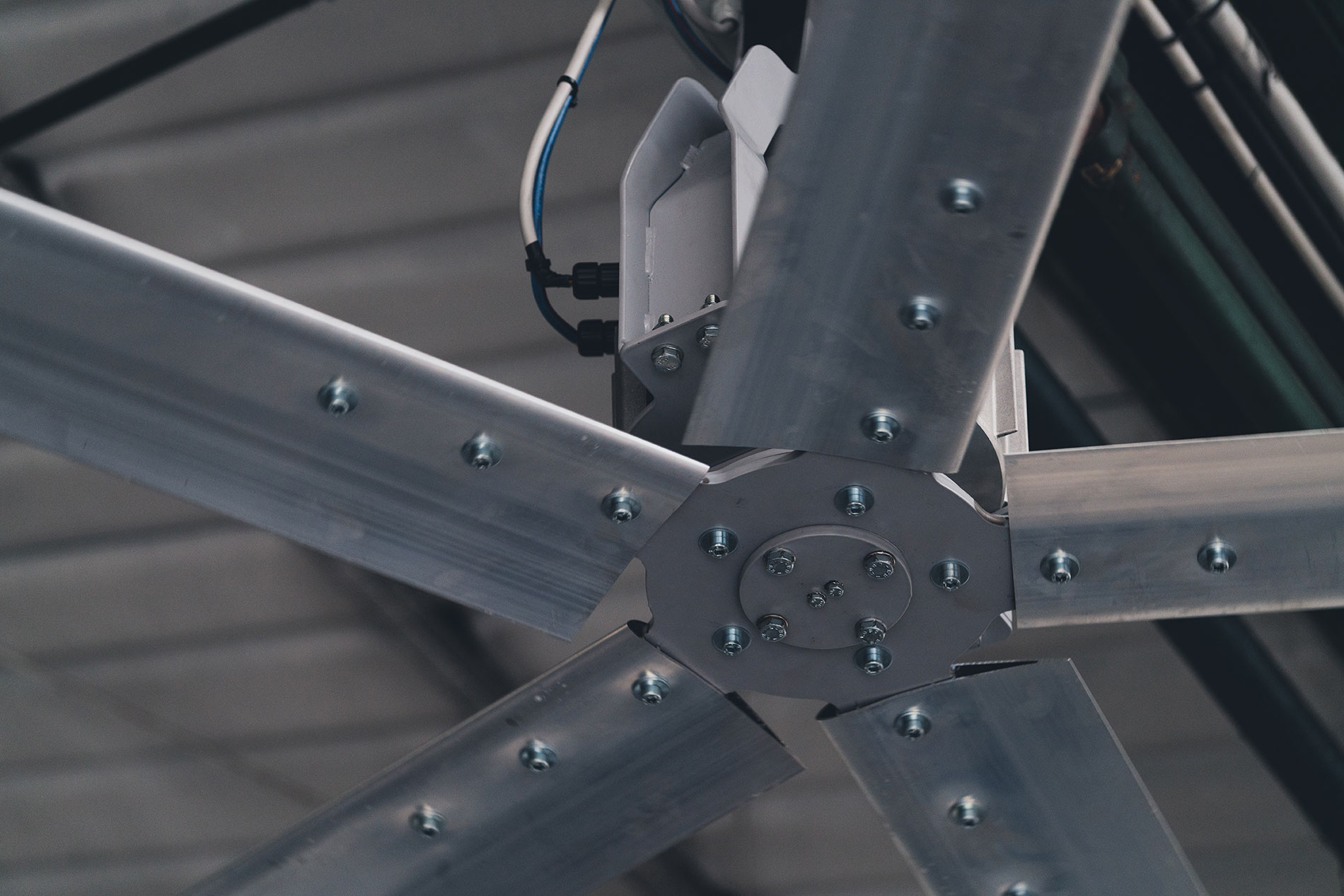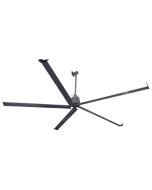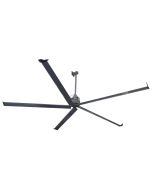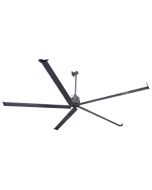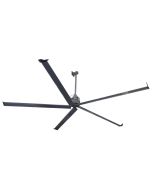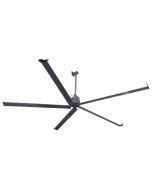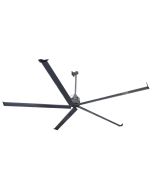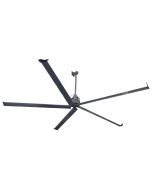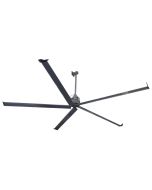HVLS Fans For Cooling in Buildings
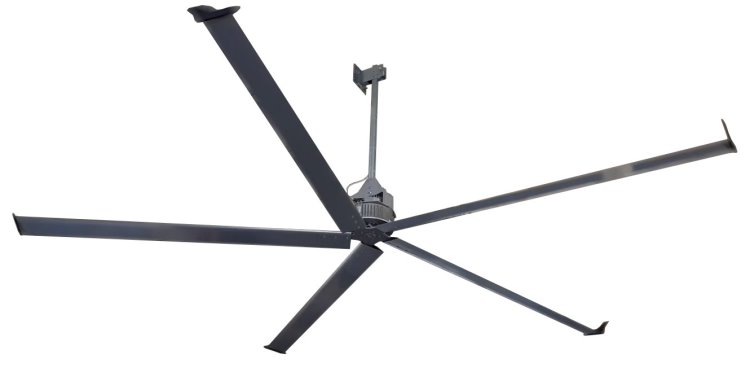
Introduction to HVLS Fans and apparent temperature
Looking to buy HVLS fans? Click here to browse our full Evel range.
The remarkable thing was that when I visited the factory making HVLS fans in Italy it was a warm day. Leaving the factory building and walking to the car, the sun was relentlessly beating down and opening the door of the little hire car was like opening a preheated oven. It was only 20 minutes into the journey with the air conditioning running at full blast that the car came down to a comfortable temperature and the internal surfaces settled to somewhere below melting point.
But here's the thing. All day inside the factory it had been cool and refreshing. Hot outside, yet cool inside.
As I drove back to the airport I reflected that with near 3 decades in the air business having sold and supplied 1000s of fans, I had never given thought to, nor even heard of, the concept of apparent temperature. It had been a good day - learning more about HVLS fans and discovering the nuts and bolts about apparent temperature.
What are HVLS Fans ?
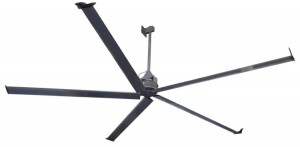
HVLS fans are characterised by two elements - firstly High Volume, the HV bit. The Evel range of HVLS fans runs from the smallest with 1.4mØ blades moving 41,000m3/hr of air through 15 models to the largest with 7m Ø blades moving 850,000m3/hr. By any reckoning that is a huge airflow.
The second element is Low Speed, the LS bit. It refers to both the speed of the fan blades and to the air discharge velocity. As an example the largest in the range that moves the whopping 850,000 m3/hr rotates at a sloth like 50 rpm. In other words at full speed it takes over a second to complete a revolution. To someone like me used to fans on a direct drive doing 960 rpm or more it took a moment or two to understand just how slowly they move. Their slowness is however a good thing. Because of the lazy sweep of these vast blades the air speed that they create is slow so instead of a busy little throw of air from a normal fan that blows your socks off, the vast air flow from these HVLS fans gently washes over you.
It is difficult to adequately describe the effect. The area affected by the airflow from one HVLS fan is very large, and wherever you walk in this area you are aware of refreshing air movement, yet in no way are you ruffled by it. This constant gentle air movement is refreshing and it does make you feel cool and comfortable.
What is Apparent Temperature?
On a still hot day the mercury can be say 35°C and it will feel hot and uncomfortable, particularly if it is humid. If however there is a gentle breeze the mercury will still be 35°C but it will feel cooler. Evaporation of moisture from our skin cools our skin so that we feel cooler and indeed when it is on a continuous basis, we are kept cooler. In other words, when there is air movement our body's' natural cooling mechanism is more effective.
The relationship is straight forward so that apparent temperature changes as follows;
• Increases with increasing humidity and visa versa
• Decreases with air speed and visa versa
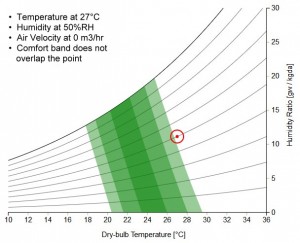
So apparent temperature and perceived temperature are one and the same thing and they differ from dry bulb temperature dependant on air speed and humidity.
Knowing that it is a hot day outside yet being inside a big building where you feel quite comfortable is a slightly weird experience - not cool exactly but not too warm either, and where there is a constant sensation of air movement throughout the building. It makes for a very pleasant working environment.
When there is no air movement the set point of 27°C and 50%RH falls outside the comfort zone
When there is 1m/s air movement the set point of 27°C and 50%RH falls easily into the comfort zone.
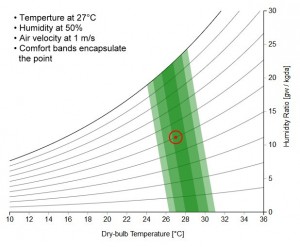
What makes Evel HVLS fans a bit special?
Essentially there are only 4 main bits on a the motor, the mounting, the blades and the controls.
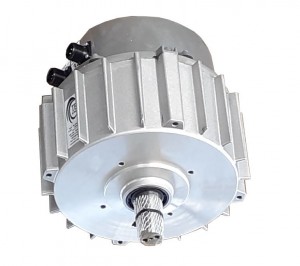
Evel HVLS Fan Motors. Changes to European regulations on energy efficiency in recent years has resulted in many machines now being driven by EC (electronically commutated) motors. These brushless motors are without doubt more efficient and more readily controlled than old AC induction motors. The motors on the Evel HVLS fans are all brushless EC type but the clever bit is that they are direct drive. No belts, no gearbox - just a shaft direct from the motor to the fan hub assembly.
When you have been used to 4 pole induction motors that whizz about 1450 rpm under load, it takes a bit of head scratching to realise that the motor of the biggest fan in the range can is spinning at the same speed as the fan blades i.e. 50 rpm But it is even more daunting that this is its maximum speed, and in fact taking a 0-10v control signal, it can be controlled to spin at much slower speed if required. The start-up on these motors is sublime and not unlike a Rolls Royce gently pulling away to hit walking pace. Loads of torque at minute speed.
The motors only come in a couple of sizes basically the larger fans get the bigger one and the smaller fans get the smaller motor. But the clever bit is that each motor is programmed to a operate to suit the fan size and blade profile that is being fitted to it. Each fan model has a lengthy set of parameters that must be programmed into the motor so that it runs and the very best efficiency. Each complete fan can be connected via a controller to the internet. This is useful for periodic checking and also in the remote event that the HVLS fans brushless motor goes wrong because it can be interrogated remotely and its operating parameters can be compared to design values and even temperature of the casing and shaft can be seen.
Evel HVLS Fan Mounting. There a number of bits to the mounting arrangement and none of them is exactly lightweight.
The motor is cradled by a pair of inverted U-shaped brackets and these support a base plate to which the base of the motor is bolted. The impeller hub is bolted to end of the shaft with a number of bolts. These are designed to be tightened to different torques so that the weight is supported by the two tightest bolts but should they both fail other bolts will take the weight. A further layer of fail safe design is in the form of a pair or brackets bolted to the base of the motor which cradle but do not touch the rotating shaft. If the hub becomes part detached because all 3 bolts have failed these cradle plates will support the blades and prevent them detaching fully.
The hub comprises of a 'spider' assembly which comprises of 2 plates each of which has 5 spurs. These twin spider plates are so designed such that if one spur cracks then the other is perfectly touch enough to support the blade on its own.
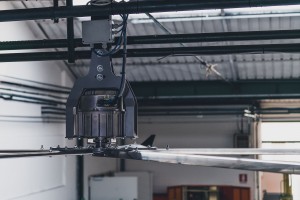
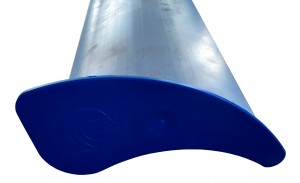
Mounting of the complete fan assembly is facilitated by a number of optional fittings which are selected depending on the design of the roof structure.
HVLS Fan Blades. It is interesting to note that HVLS fans come with a variety of blade quantities. Early ones had 10 blades, others have 8 or 6 blades. The Evel range of HVLS fans has 5 blades. The choice of the number of blades is the subject of much research. For a given fan speed, too many blades and you find that any one of the blades is trying to bit into turbulent air from the preceding blade. Too few blades and the fan will not move as much air as it could if it had another blade. In other words like so many things in engineering the game is to work out what the top of the bell curve for the parameter you are designing. The engineered balance between turbulence and maximum effectiveness for the speed that these aerofoil blade revolve results in a design that uses 5 blades, each with a upturned wing tip designed to stop air escaping the sweeping movement of the aerofoil profile of the blade.
Control. There are a number of control options to the Evel HVLS fans. All work from a 0-10v speed control signal but there are various options for added control sophistication and system monitoring via modbus.
What About The Racket?
It is a fair question. Moving say 850,000m3/hr of air is bound to be massively noisy. At least that is what I thought before visiting the factory in Italy. Well used to the sound of blades beating air into submission and of whirring motors and humming gears, I fully expected something to fill my ears.
I admit that after a former life in uniform with the occasional loud bang, hearing pins drop is not exactly my forte. I listened, I felt the refreshing wash of air movement, and I think I detected a faint hum. My host said that noise was not the fan but was coming from the factory next door. Not convinced, I ambled across the factory floor towards the back wall adjacent to the next door property and right enough the hum increased in volume - it was the factory next door. Of the gently sweeping HVLS fan above my head I heard diddly squat.
With the lack of noise, the slowly rotating motor and blades and the gentle even breeze they created, the effect on the senses was sublime.
Make your environment comfortable and take your air space to the next level with Evel HVLS fans from Puravent.
Call us for more information or help.



